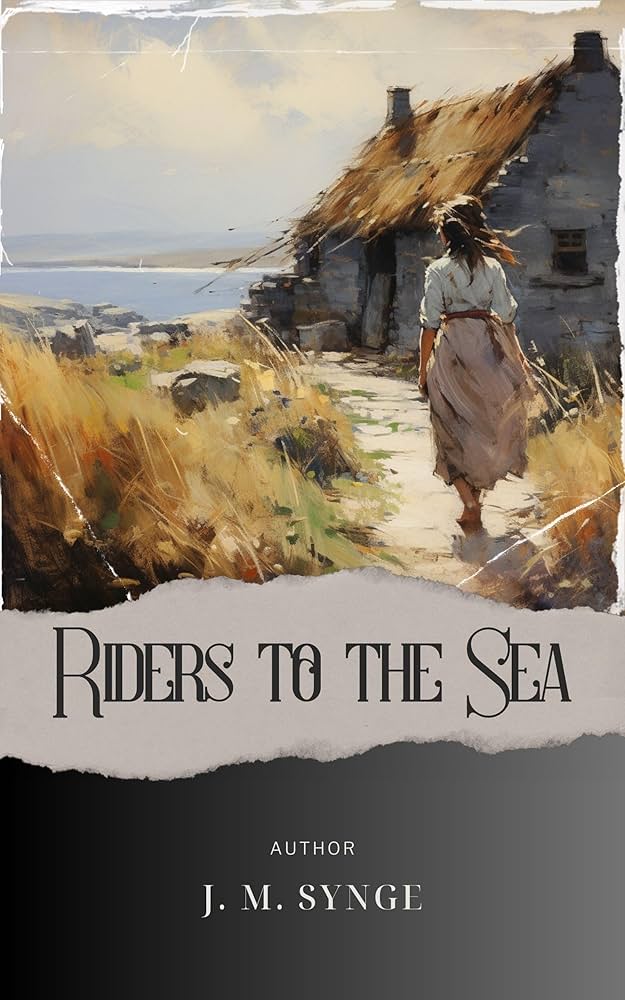Introduction
byIntroduction to Riders to the Sea offers readers a poignant glimpse into a world shaped by the unpredictable power of nature and the unrelenting passage of time. John Millington Synge crafted this tragic play not merely to entertain but to reveal the emotional truth within a way of life slowly being erased by modernity. The setting, deeply rooted in the remote Aran Islands, allows the story to breathe with authenticity, capturing the voices of those whose daily lives were balanced precariously between survival and loss. Synge’s artistic vision is evident in how he draws from real incidents and oral traditions, translating them into an intimate tale of grief and resilience. The realism of the narrative is heightened by his exposure to the Irish dialect and folklore during his stay, giving the play a powerful, immersive quality. What results is a story that feels both ancient and immediate, echoing with universal themes.
Maurya, the grieving mother at the heart of the play, serves as a timeless symbol of maternal strength and sorrow. She is not only a character but a vessel through which the emotional weight of generations is carried and expressed. Her lines are minimal but profound, each word carefully chosen to reflect a life marked by repeated farewells and inevitable funerals. Synge’s restraint in dialogue enhances the intensity of the story, allowing silence and space to speak volumes. The simplicity of the play’s structure—set within a single room, over a short span of time—amplifies the gravity of each moment. In that small kitchen, the ocean’s vastness feels closer than ever. It is not merely a backdrop, but a force with memory and purpose, constantly shaping the fates of those who live beside it.
The spiritual undercurrent in Riders to the Sea adds another layer of meaning to its emotional and physical realism. The inclusion of “second sight,” the Celtic belief in premonitions or visions, blurs the lines between natural and supernatural, grounding the mystical in the everyday. This belief allows characters like Maurya to perceive the impending doom not just through fear but with almost sacred clarity. Her acceptance of this supernatural knowledge does not provide peace—it deepens the sorrow—but it also offers her a kind of control in a world where little can be controlled. When she sees Michael’s ghost and speaks of signs, she is not dismissed as mad but understood as a woman in tune with the tragic rhythms of her environment. Such moments reveal how embedded spiritual beliefs were in the culture Synge so respectfully portrays.
The title itself, Riders to the Sea, evokes a haunting image—men forever journeying into danger, swallowed by the vast waters without return. The sea, as Synge paints it, is never just water; it is fate, history, and judgment. It rides over the lives of the islanders, shaping each birth, each death, and every silence in between. The dramatic tension arises not from plot twists but from the inevitable. Viewers are drawn in not by suspense but by the slow, certain approach of destiny. Synge teaches that true tragedy does not scream—it whispers with the quiet finality of a wave closing over a man’s head. This quiet is what lingers most after the play ends.
Another remarkable element of the play is how Synge renders gender and generational strength. In a household bereft of men, it is the women who carry the weight of memory and labor. Nora and Cathleen reflect the continuity of tradition and the burden of responsibility passed down from Maurya. Their roles emphasize how survival is not just physical but emotional, carried through stories, rituals, and grief that does not recede. Maurya, in the end, finds peace not by overcoming grief but by embracing its permanence. There is a moment when she proclaims there is nothing more the sea can take—her sons are gone, and thus, her fear is gone too. This surrender is not weakness; it is profound resilience. She survives not because she wins, but because she endures.
The lasting power of Riders to the Sea lies in how Synge marries cultural specificity with universal emotion. Although deeply Irish, the play resonates with any audience that has faced uncontrollable loss or grappled with nature’s indifference. Its sparse language and compact form prove that a story need not be long to leave a lasting impact. Synge’s work remains a touchstone in Irish drama and a model of how to translate oral tradition into written art without diluting its essence. As modernization continues to blur the lines between ancient customs and present demands, Riders to the Sea endures as a reminder of what is lost and what still endures. In just a few pages, it speaks of lifetimes, and in a single voice, it echoes generations.

